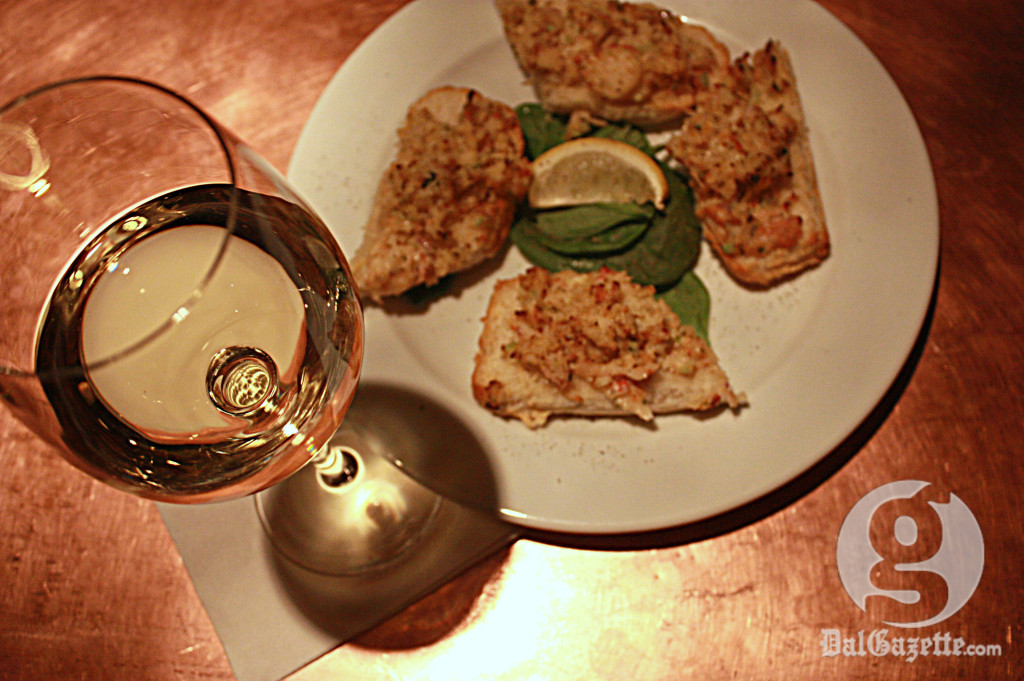
A few weeks back I met my boyfriend for a late meal at a lovely Italian restaurant on the Halifax waterfront. It was late in the evening, we were starved and we got the last table for two in the place. I felt rushed and anxious, so I ordered a glass of Valpolicella without even looking at the menu. It was exactly what I wanted: easy drinking and not too heavy with fresh acidity.
I ordered my appetizer, a crostini with pear, honey and blue cheese. I took a few bites. I hadn’t eaten something so delicious in a long time. Then I took a sip of my wine. Suddenly, it was different: bitter, overly acidic and unpleasant.
I realized that I’d been too rushed. My pairing was terrible. It didn’t ruin my meal, but I didn’t even finish my glass.
The sweetness from the pear and honey had changed my palate and soured my wine. It would have been smarter to get a sweet Riesling, Vouvray, Sauternes, or even a Chardonnay verging on the sweeter side.
Luckily, it’s easy to avoid the kind of disappointment I encountered that evening.
Some think there are steadfast rules for marrying a dish with a wine, such as red wine with red meat and so on, but pairing is an art that is more flexible and fun than you’d think.
There are a few suggestions that might help in pairing a wine with a meal, but there are seldom absolutes. There isn’t only one bottle of wine that is a soul mate to your lasagna or beloved cheese. And you can drink red wines with white meat.
With a few pointers and flexible suggestions about weight, acidity and sweetness, even a beer-swilling football player can impress his date with a good pairing.
First off, whether you’re at the wine shop or a restaurant, it is going to be hard to pick a wine if you’re not sure about the flavours in your dish. Try to determine the weight, flavours, body, acidity, sweetness and ingredients with which the wine will have to contend.
At a restaurant you could wait until the food has arrived to order the wine, or even have a taste of the wine then order your food. What’s the rush?
The backs of wine bottles and the menus in restaurants will often provide pairing suggestions. Those suggestions aren’t as haphazard as they might seem and are often chosen by a professional.
Pairing food and wine can mean pairing the wine to the food or the food to the wine. It’s really up to you to decide the order of things, because both yield good results.
—
Pairing for similarity:
-The flavour intensity of the food and the flavour intensity of the wine.
Example: Barbecued meat and smoky red wine
-Sweet wines and sweet foods.
Example: Cheesecake and sweet Riesling
-The acidity in the wine and the acidity in the food.
Example: Tomato based pasta and Valpolicella.
-Chewy meats and wines that have high tannin.
Example: Beef tenderloin and Malbec
-The body of the wine and the weight of the food.
Example: Turkey and Pinot Noir
Pairing for contrast:
-Sweet wine with a salty dish.
Example: Old cheddar and Sauternes.
-Fatty or greasy food with a high-acidity wine.
Example: Smoked salmon and dry sparkling wine.
Pairing for failure (to avoid):
-Wine with body with a light dish.
Example: White fish with lemon and Merlot
-A light wine with very heavy food.
Example: Slow cooked beef stew with a Riesling
-Tannic wine with a sweet dish.
Example: Cabernet Sauvignon and a salad that incorporates fruit
—
These days, smartphone apps make the pairing game a bit easier. There are loads of free applications to help you find the right match. Hello Vino helps you find a good varietal to pair with food, Cheese Matters will find the right cheese for your wine, and WineStein lets the user indicate the exact components of a dish to find a good wine match.
By taking into consideration the pairing of food and wine both will shine more brightly. A bad pairing can change the flavour of your dish from delicious to unpleasant; think of how eating candy can turn a usually sweet food surprisingly bitter. A good pairing, like fish and chips and a dry Riesling, can turn simple food into a five-star meal.
Pairing is an art, and it is very subjective. Hopefully these general guidelines will help avoid horrendous mistakes, but don’t let those loose laws confine you. Let your taste buds guide you, be creative, and enjoy every bite.


Recent Comments